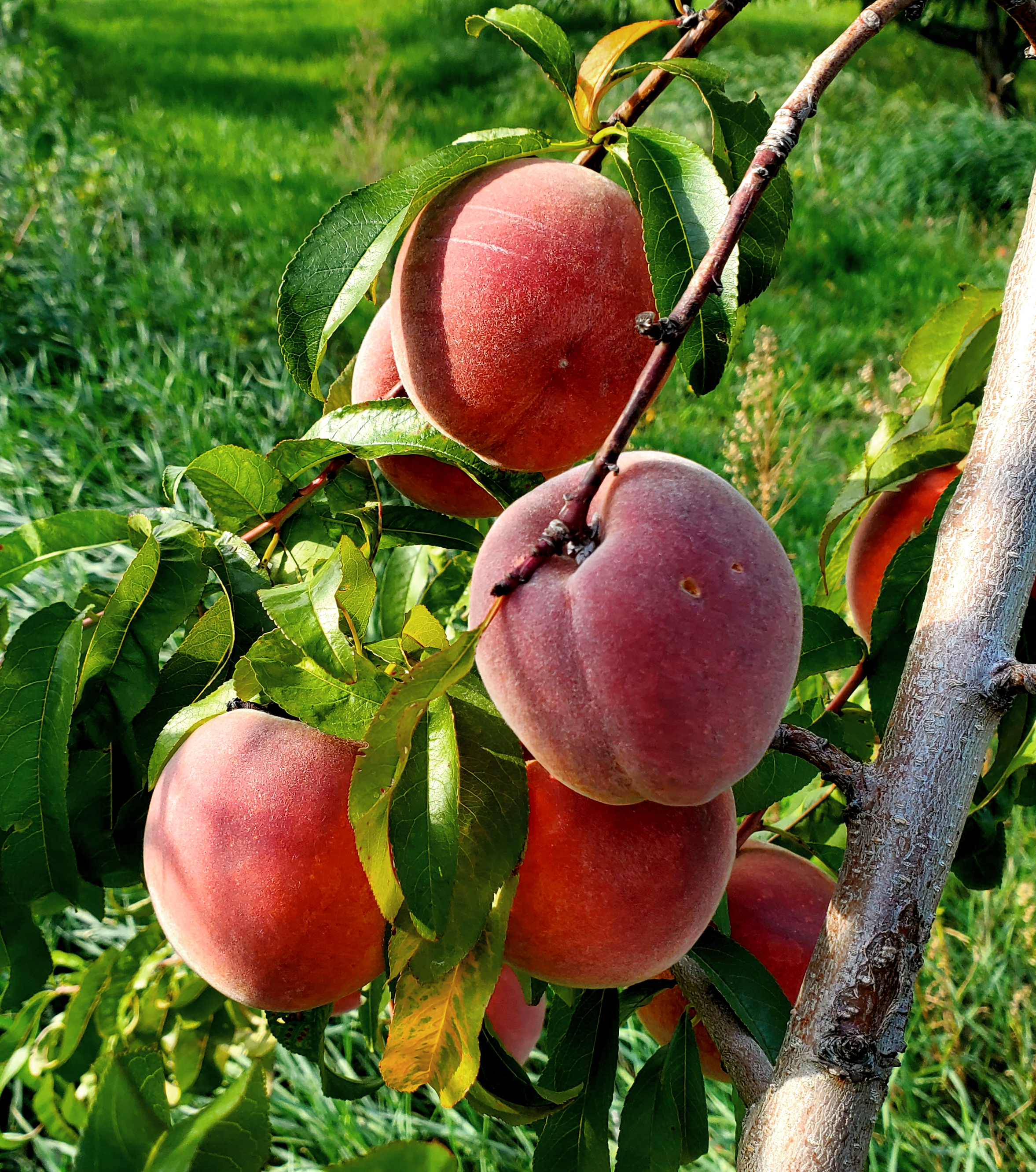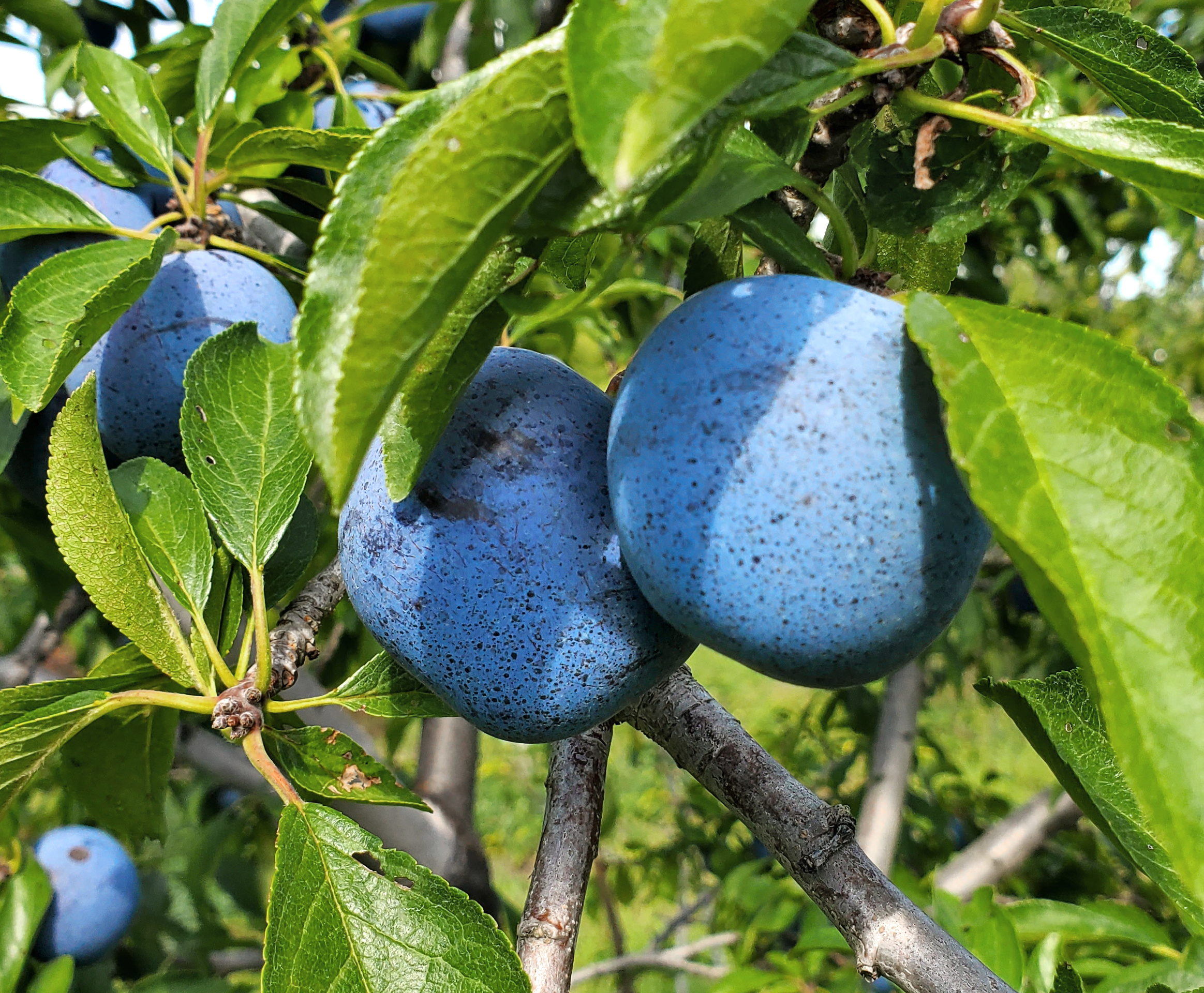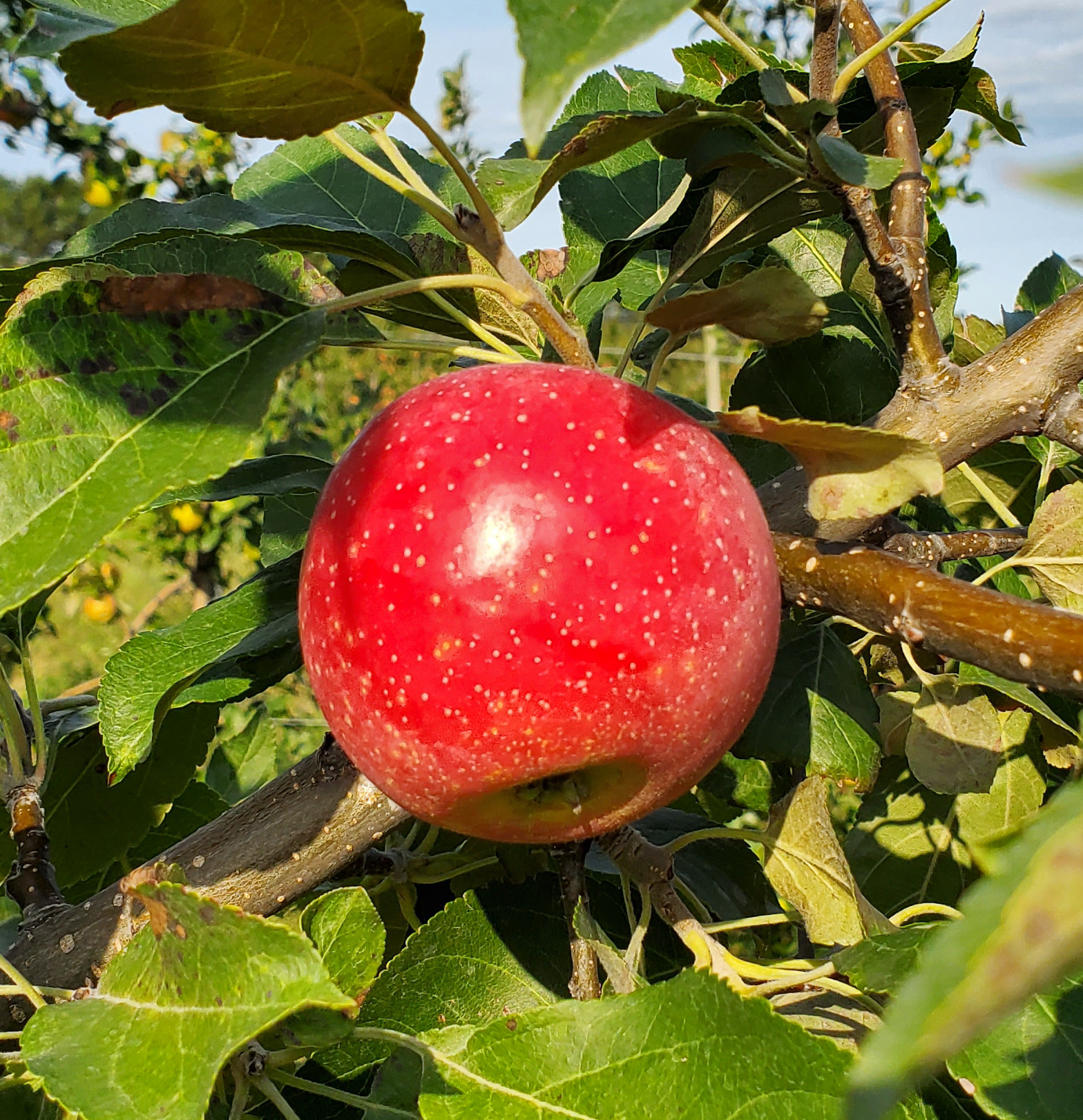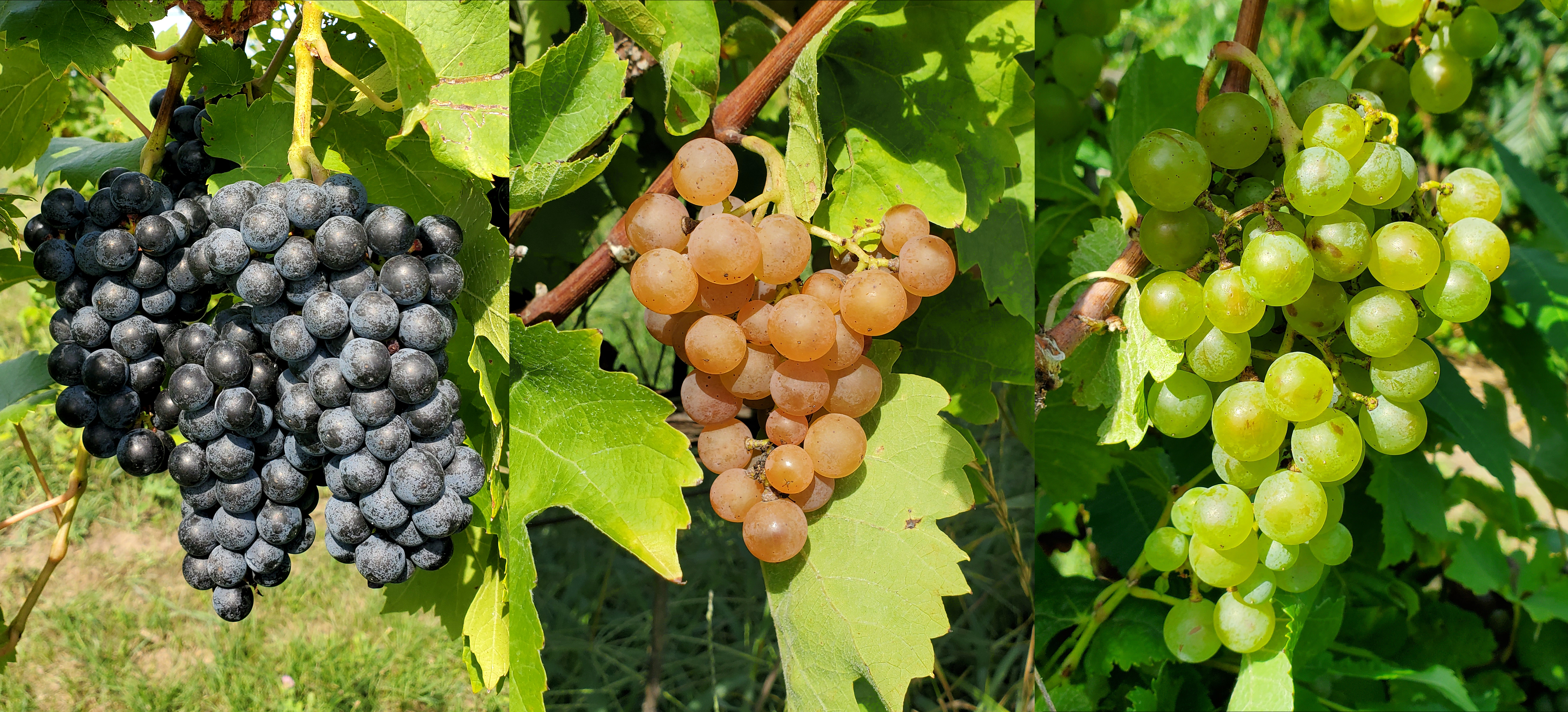Southwest Michigan fruit update – Sept. 8, 2020
Apple and wine grape harvests are underway. Fall is a good time to test soils for nematodes.

Weather
The first week of September was cooler with highs in the mid-70s and lows in the 50s and low 60s most of the week. A storm system passed through the area on Tuesday, Sept. 1, leaving 1-1.5 inches of rain. Another rain system came through this today, Sept. 8, dropping another 0.5 inches around the region.
This coming week, expect cooler, fall-like conditions with highs near 70 and lows in the mid- to upper 50s. We have decent chances for rain several days this coming week.
With the cool temperatures last week, we picked up fewer growing degree days (GDD) last week: 177 GDD base 42 and 120 GDD base 50, respectively 25 and 17 per day.
|
Southwest Michigan GDD summary from March 1 – Sept. 6, 2020 | |||
|---|---|---|---|
|
Station |
GDD 42 F |
GDD 45 F |
GDD 50 F |
|
Benton Harbor (SWMRC) |
3679 |
3238 |
2550 |
|
Lawton (Lawton) |
3630 |
3186 |
2494 |
|
Fennville (TNRC) |
3431 |
2997 |
2323 |
|
Average for the SW region |
3610 |
3168 |
2481 |
|
Average last week |
3433 |
3013 |
2361 |
Nematode and virus testing
Fall is the time of year to test for soil nematodes. Nematodes feed on plant roots, causing symptoms that can be misdiagnosed as nutrient or disease issues. See this announcement about nematodes and sampling for them.
This is also a good time to scout for symptoms related to other plant stressors. Many of these problems can be abiotic including nutrient issues and graft incompatibility, but some problems can be caused by plant viruses. If you are interested in taking samples and testing, send them to Michigan State University Plant & Pest Diagnostics.
Tree fruit
Rainfall this summer has been scarce. We are about 4 inches below average for the year and are seeing signs of stress in many plants and fruit plantings. Codling moth and oriental fruit moth adults are still being caught. Obliquebanded leafroller numbers are up this week. Brown marmorated stink bug adults from the summer generation are continuing to be caught in higher numbers. Thirteen line ground squirrels are making holes in trickle tape, seeking water. Covering the tubing with dirt helps to discourage this pest.
In peaches and nectarines, recent dry conditions and wind have caused premature fruit drop of some varieties. Some varieties hold their firmness well after they reach full maturity and eventually drop off, still firm, giving the illusion of premature drop. We are in the harvest window for PF28-007, Cresthaven, Redskin, PF35-007, Gloria, Encore and Autumnstar. Sunny and relatively dry conditions have enhanced peach flavor this year. The third generation of oriental fruit moth is out but should be finishing now. Larvae from this generation is being found in fruit, usually from stem end entries. Western flower thrip is still active, causing white blotches on red blush areas of peaches.

In cherries, to maintain good tree health and winter hardiness, continue to protect the leaves from cherry leafspot into September. See: Low spray programs for tart cherry.
Plum harvest of Early Italian and Stanley is underway. Brown rot is showing up on insect damaged fruit. Plums held on the tree until soft ripe are susceptible to spotted wing Drosophila (SWD) attack.

Apples being harvested include early strains of Gala and Honeycrisp. Some spot picking of main season Gala and Honeycrisp is underway. Later maturing varieties are being harvested for processing and taffy apples. Codling moth is still flying in most orchards. Oriental fruit moth third generation adults are also flying now. All stages of brown marmorated stink bug are increasing in apple orchards. Susceptible varieties become most attractive just before harvest. The initial damage from brown marmorated stink bug feeding this time of year is hard to see. It becomes apparent later and can be a problem during and after cold storage.
Apple maggot numbers peak in August and are declining now. For varieties where harvest is more than a couple weeks away, another insecticide application may be warranted. Wait for a day with good weather conditions to get the most out of your effort. Woolly apple aphid colonies are becoming more apparent in some orchards.
Bitter rot is increasing in orchards, especially Honeycrisp, Yellow Delicious and Empire, although all apples are susceptible. Maintain sooty blotch and flyspeck protection with reapplication when rain has likely reduced coverage. For our predicted apple harvest dates, see: Predicted 2020 apple harvest dates for southwest Michigan.

Pear Bartlett fruit harvest is underway, with Harrow Sweet to start soon. Brix levels are relatively high this year. Codling moth, obliquebanded leafroller and pear psylla are the primary insect pests now. Like apples, pears should be protected against sooty blotch, fly speck and possibly bitter rot.
Small fruit
Spotted wing Drosophila (SWD) numbers are up in southwest Michigan.
Grape harvest has started for several early hybrid wine varieties including Marquette, Foch and Frontenac. Most hybrid and vinifera wine grapes are between 17-21 degrees brix. Concord and Niagara are about 15 degrees brix. The disease focus is on controlling cluster rots before harvest. Once brix levels increase above 13-15, botrytis bunch rot and sour rot management becomes very important. Good coverage and chemical class rotation are important for controlling both cluster rots. Focus on keeping the fruit clusters clean. Including an insecticide to manage the insects that spread the disease is particularly effective in managing sour rot. A new Michigan Grape Fact Sheet is now available for managing botrytis bunch rot.
Grape berry moth is finishing the third generation. The grape berry moth model on Enviroweather predicts egglaying of the fourth generation should begin between Sept. 5 and Sept. 10 for most growers in southwest Michigan. Consider a second spray if you have had trouble with grape berry moth in the past. Apply the second spray about two weeks after the first.
Yellowjackets are becoming common as sugar levels increase. They can damage berries, opening them up to infections. They can also be a problem during hand harvesting. With harvest near for many varieties, pay close attention to the preharvest intervals of any chemicals used.

Blueberry harvest is finished in Van Buren County. Growers close to the Lake and to the north still have more pickings of Aurora or Elliott. If you are still harvesting fruit, maintain tight coverage for SWD. Maintain irrigation after harvest to maintain plant vigor and increase flower bud formation in the fall.
Strawberries in matted rows have filled out the rows. Maintain protection against potato leafhopper and leaf spot diseases. Everbearing strawberry harvest is underway and the fruit needs to be protected from SWD.
In brambles, blackberry harvest continues. Fall red and black raspberry harvest is underway. SWD is the major insect pest of brambles and can destroy the crop quickly. Treat SWD as a disease and focus on keeping it out. Do not let this pest become established in the field. Pick ripe fruit frequently so that ripe fruit are not available to the pest for long.
Related articles and resources
- Southwest Michigan fruit update – September 1, 2020
- Predicted 2020 apple harvest dates for southwest Michigan
- Managing Brown Marmorated Stink Bug in Michigan Orchards
- Low spray programs for tart cherry.
- Michigan grape scouting report – September 2, 2020
- August is key time for protecting clusters from grape berry moth
- Irrigating Michigan blueberries



 Print
Print Email
Email
